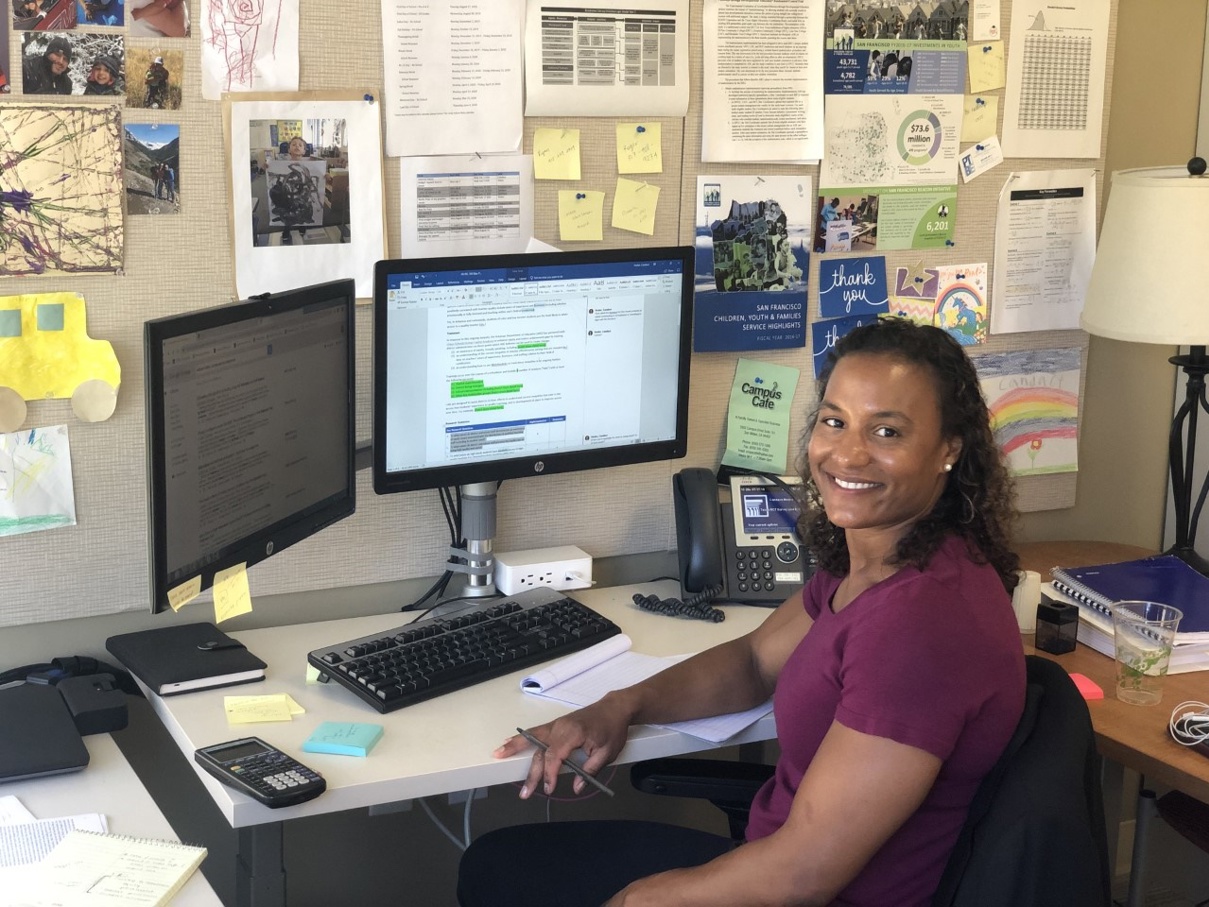What’s Working and Why? Candace Hester Expands Research on Long-Term Efficacy of Career Programs
August 14, 2019
By Julie Bos, ECMC Foundation Contributing Writer

Candace Hester didn’t start out as a researcher. After college, she started her career as a high school math teacher in Oakland, California.
During her five years of teaching, however, Candace grew increasingly frustrated with challenges within the K-12 educational system, including having limited classroom time with her students, many of whom were from low-income communities.
“I started exploring ways to expand the amount of classroom time with students or the number of years with them—trying to restructure the whole framework,” said Candace. “I wanted to learn more about making broader systemic changes, so classroom teachers could add more value.”
Candace decided to pursue her Master’s degree in Economics at University of California, Berkeley, and later went on to complete her Ph.D. in Public Policy
While completing her graduate work, Candace was particularly inspired by one of her professors and his research on immigration policy and the social consequences of racial disparities in U.S. labor markets and the criminal justice system.
“Learning more about his work made me realize that research was a place where I could have a broader, systemic impact on improving life outcomes for people from vulnerable populations,” she said. “Ultimately, I want to help folks from low-income and racial minority backgrounds to achieve their best outcomes. I’m driven not only out of self-interest as a black woman, but also out of a continued interest to help underserved communities like the ones my prior students inhabited.”
After finishing her Ph.D, Candace joined the American Institutes for Research (AIR). In her current role as senior researcher, she is gathering data on what types of education and career programs work best for underserved populations and why.
One of her projects is a study funded by ECMC Foundation, examining a broad array of career programs available to working-age people, including credit-bearing certificate and degree programs at public, nonprofit and for-profit institutions, as well as state-based Workforce Innovation and Opportunity Act (WIOA) adult basic education, apprenticeship, on-the-job, and other basic/occupational skills training. The study aims to shed light on the U.S. landscape of career program opportunities and estimate the long-term returns to different types of career programs.
Candace, the project director for this study, is joined on the project by economist and principal researcher at AIR, Sami Kitmitto.
Candace also hopes to find out more about the relative returns of accredited and non-accredited education—for example, whether someone is more or less likely to experience long term wage gains if they earn an Associate degree, compared to completing a bootcamp, employer-based or non-accredited training.
“Without this information, individuals and organizations could be pouring their time and resources into programs that research suggests are not cost-effective,” said Candace.
In addition to reporting on these findings in an accessible written report, AIR will design and build an interactive web-based mapping application that will allow users to explore the current landscape of career programs across the United States.
The research is expected to be completed by December 2019.
“We’re happy to serve as an investment partner for ECMC Foundation—providing information they can use for themselves and also to disseminate to other stakeholders,” said Candace. “We are increasing the amount of literature available to advise different kinds of people on how to improve their career outcomes.”
